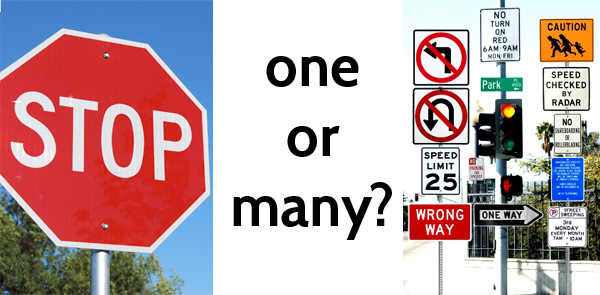How To Create A Landing Page For A Blog
Reading Time: 3 minutes

Blog posts are great for generating search traffic, demonstrating your expertise in a given field, and communicating with your client base. A well written blog, backed with a sound strategy, should generate a number of potential leads for you and your business. Are you capturing them? If people aren't exploring your site for more information, you need to do a better job of turning your blog post pages into landing pages.
The goal of a landing page is usually to inform and capture. You want them to do one action – whether that is purchasing, signing up, or doing something else – and you want to inform them just enough to get them to follow your call-to-action. If your traffic tends to be "one and done" visits without much engagement, you must take advantage of your lone opportunity to capture them. So how can you turn a blog post into a more effective landing page?
Decide On An Action
You must first decide on an action you want visitors to take. Deciding on the primary action you want visitors to take can be difficult. It may feel like you are closing some doors and removing opportunities. This is not the case. You are simply creating a clear, easy to follow action that your users should take. How much easier is it to follow one, clear direction as opposed to six? Which are you more likely to do?
This may vary for your blog. You could place an emphasis on building an email list which means you would want to make the signup form your priority. If you want them to explore and read other posts, make it easy by giving them the ability to navigate to other posts easily. Below are a list of a few of common calls to action you may want to emphasize:
- Email Signup
- Like Your Page On Facebook
- Share Your Post
- Comment On Your Post
- Read Other Posts/Explore Your Site
- Contact Your Business
- Buy a Product
- Subscribe to Your Blog
Clean Up Your Design
After you establish your call to action, you need to clean up your design and prioritize your action. You may need to remove some items from your sidebar or de-clutter your design to make the action easy to see, comprehend and execute. It isn't enough to simply say "I want more emails", add a signup form to the sidebar, and expect the emails to start flowing. Great design should move the reader's eye without the reader being consciously aware of it. The action should feel as though it is natural response to visiting/reading your content. If you are struggling with this, hire a designer that understands user experience, like we do at Uhuru Network. In the long run, it will be worth the having the design expertise of a professional to make sure this is done right.
Some of the design elements you may look to incorporate into your design:
Color
- Red – Hot, Fire, Excitement, Stop
- Green – Renewal, Earthy, Go
- Yellow – Bright, Energizing, Excitement, Warmth
- Blue – The shade of blue can greatly impact the perception with dark blue being more calming/strengthening and brighter blues being more energizing.
- Purple – Wealth, Luxury
Direct The Eye
- Arrows – You can use arrows (or other shapes) to point the person to the next step they need to take.
- Design – Are you familiar with the artistic principle of a "vanishing point"? It's where something large in the foreground gets smaller and eventually disappears as it moves to the back. It leads your eye to that point. You can move the eye in a similar way with your design.
- White Space – Sometimes called "negative space", white space is space in design that is left unmarked. Good use of white space can move the eye very effectively and allows you to emphasize important parts of your page. The example below shows eye tracking behavior on a website. Just look at the heat map around the white space areas.
Social Proof
If you've been published anywhere, let people know. It shows you've been recognized for your knowledge.
Create A Shortage
The idea that a product may not be around later can inspire visitors to buy now. It can work with non-products as well like limited spots for a webinar or mailing lists.
A/B Test
Last but certainly not least is to test your changes. You should have some baseline stats before making the change and there are several analytics programs out there that make A/B testing easy. If you made a change and the response rate decreases, you know the change was not effective and it's time to try something else. A/B testing will allow you to hone in on the most effective method for getting the action you want and you may even be surprised at the results. Go with what the data tells you, not with your gut.
Closing Thoughts
If you're website or blog is struggling, you need to clarify what people see and do when they arrive. Borrowing techniques from effective landing pages can be the simple solution to help turn your blog around.
How To Create A Landing Page For A Blog
Source: https://uhurunetwork.com/turn-your-blog-posts-into-landing-pages/
Posted by: carterhinatimsee.blogspot.com

0 Response to "How To Create A Landing Page For A Blog"
Post a Comment